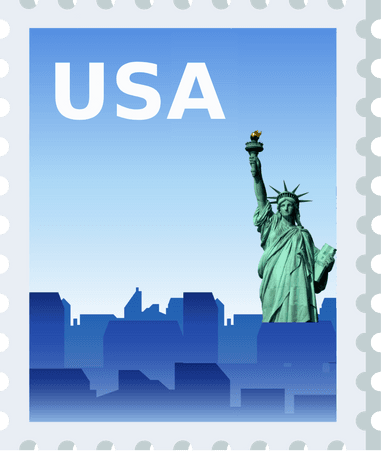Expert UI/UX Design And Development Services by
Brain Inventory
Get Started Within
2 Business Days
- 100% resource replacement
- Flexible hiring models
- 100% NDA-protected contract
- 100% refund policy
Get Started Within







Our company provides innovative user interface and user experience design services. Our goal is to deliver high-quality finished products on schedule. Our internal creative team works as a design studio within our comprehensive software development company. We have an innovative design process focused on creating deeply engaging mobile and web apps.
We develop intuitive user interfaces with dynamic visual components such as animated graphics in two or three dimensions and integrated media features. This provides users with a seamless, cohesive experience as they navigate the Custom Software Development Services we design.
Our user interface and user experience designers have extensive expertise with visual rendering technologies such as OpenGL and WebGL. We work closely with your key decision-makers and information technology staff to create an aesthetic (encompassing color schemes, brand identities, and interface layouts) that resonates with and reinforces your organization's values and norms.
Brain Inventory is a premier user interface and user experience design firm that specializes in creating clean codebases that are compatible with any platform a client prefers. As a leading UI/UX development company, We concentrate on boosting business opportunities by building tailored digital solutions.
We employ various tools such as Xamarin, DevExpress, Ionic, Appcelerator, and Apache Cordova to build highly responsive interfaces and user experiences for App Development Services that are optimized for touchscreen devices. Leveraging these frameworks, we can offer intuitive designs that provide an enhanced experience for progressive web apps on mobile platforms.
When designing intuitive user interfaces, we follow established guidelines like Apple's Human Interface Guidelines and Google's Material Design principles. Adhering to these standards allows us to create solutions focused on usability and accessibility. This facilitates effective communication between users and the interface by promoting clarity and simplicity in the design.
Our team utilizes an in-depth methodology to fully understand your company objectives and determine the optimal way to cater to your intended customers with a smooth, instinctive, and enjoyable interface.
In the process of exploration, we conduct comprehensive investigations on user data, technical limitations, and business objectives and needs. This is accomplished by conducting interviews with users and stakeholders, examining content and site performance, analyzing tasks, and mapping out the ecosystem.
Through meticulous analysis of users and how they interact with products, we gain useful knowledge of what product capabilities they anticipate. By constructing representations of target users and mapping the paths they take through products, we can comprehend behavioral patterns and optimize how people accomplish tasks.
We employ data-driven techniques to enhance the rate at which visitors become customers. We also guarantee that essential user-tailored functions, such as calls-to-action, menu selections, and primary site navigation are readily apparent and recognizable. This makes it straight forward for visitors to accomplish what they set out to do when accessing the website.
Our approach to visual design is about more than just aesthetics; it is grounded in experience design principles. We emphasize functionality and usability to craft user experiences that connect with your target audience. This is based on having a clear comprehension of who the users are, what they need to accomplish, and the contexts in which they interact.
To assess the usability of the final product with actual users, we employ methods like Concurrent think-aloud (CTA), Retrospective think-aloud (RTA), Concurrent Probing (CP), Retrospective Probing (RP), website analytics, and A/B Testing. These allow us to evaluate how easy and intuitive the final product is for real users to use while they are using it and after they have used it.
In the dynamic realm of UI/UX development, a diverse array of tools and technologies plays a pivotal role in crafting seamless and visually appealing user interfaces. Designers harness powerful software like Adobe XD, Sketch, and Figma for prototyping and wireframing, enabling a meticulous planning phase. In the coding arena, HTML5, CSS3, and JavaScript remain foundational, while libraries and frameworks such as React and Vue.js enhance interactivity and user engagement. Collaboration tools like InVision facilitate effective teamwork, allowing designers and developers to seamlessly communicate and iterate on designs. Furthermore, user testing tools like Usability Hub and User Testing bring valuable insights into user experiences, ensuring that the final product aligns with user expectations. The continual evolution of these tools reflects the commitment of UI/UX professionals to staying at the forefront of innovation in crafting digital experiences.
Brain Inventory's user interface and user experience design services aim to increase return on investment for clients and improve user interactions by aligning business requirements with design features. They utilize first-rate ideas to create nimble and forward-looking designs.
The main focus of the design elements is to improve the strong and ongoing engagement with the user community and to incorporate the most efficient sequence of actions to achieve the user's objectives.
Our ready-made solutions are created with the ability to integrate technology add-ons, customizations, and risk-reduction measures. The user interface and user experience design services are employed in a targeted way to build extensive and easy-to-use interfaces.
Our companyfocuses on user interface and user experience design. We create adaptive, intuitive, and responsive designs that function across multiple platforms and devices. We comprehensively evaluate the ease of use and ability to scale our solutions in terms of components and navigation.
Brain Inventory, we specialize in UI/UX design, have a wealth of knowledge in creating Microsoft-endorsed design interfaces, and guarantee a streamlined development process. We have a proven track record of producing highly aligned, value-driven, and visually captivating UI/UX designs. To create optimal and targeted user interaction models across various platforms, a thorough analysis of the client's business requirements is conducted alongside astute competition mapping. Our UI and UX designs are designed to be adaptable to evolving business needs and capable of scaling up to future advancements, all while maintaining a sharp focus on delivering a return on investment. The client retains complete ownership throughout the end-to-end development of UI/UX design services, with the added benefit of smooth and tested deployment and post-deployment support. To ensure seamless functionality of the UI/UX solutions and minimize errors during the development stages, Brain Inventory collaborates with Microsoft-approved skilled coders.


We are always looking out for new collaborations, whether you are a client who is passionate about a project or a talent who is interested in joining our team, our doors are always open.

618, Shekhar Central, Palasia Square, A.B Road, Indore, Madhya Pradesh, 452001
+918109561401

Brain Inventory, SBVS, 8 Roundhay Road, Leeds, UK, LS7 1AB
+18008209286

44 Main Street East Milton, ONCanada L9T 1N3
+4166696505

185 Wasfi Al-Tal Street, Ammon Oasis Complex P.O Box 4724 Amman 11953 Jordan
+960770781000

720 Seneca St Ste 107 Seattle, USA 98101
+1(206)6533419